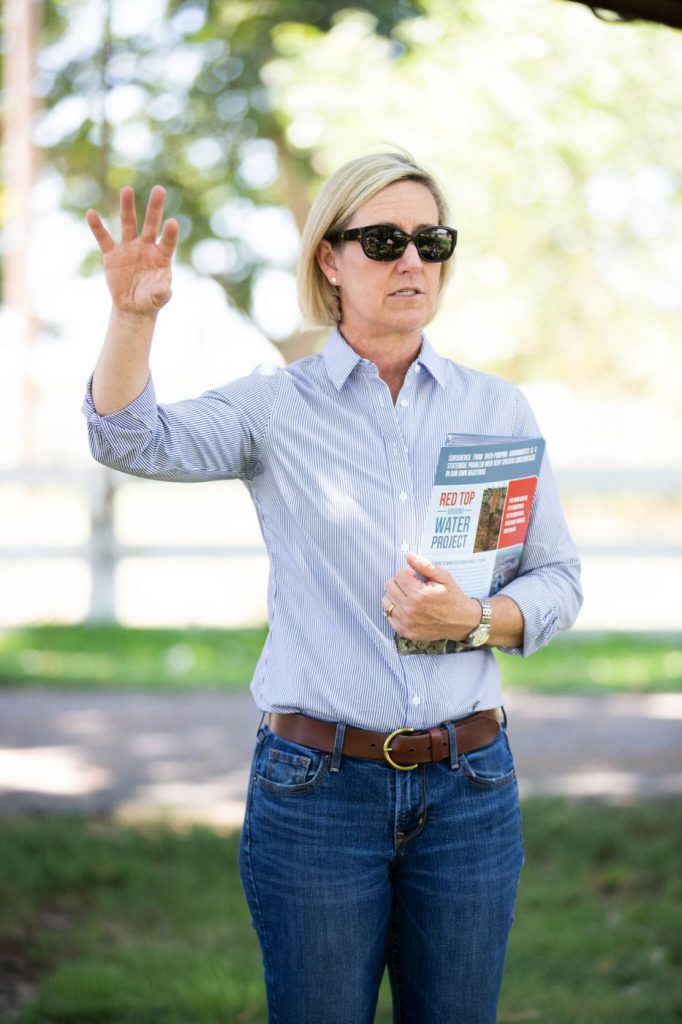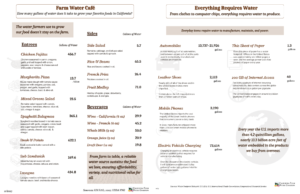If You’re Concerned about Climate Change and Water Supply, California Farms Can Help Show the Way
A new UN climate study indicates that climate change will be a bigger problem for farmers and consumers in the future.
In a 2018 Public Policy Institute of California (PPIC) survey, 80 percent of respondents said climate change is a serious threat to California’s future. And 72 percent cited water as a concern, with drought and water supply named most frequently as our biggest environmental issue. If you see yourself in these statistics, you should be cheering the efforts of California farmers.
All Californians have been called upon to conserve. Urban users tripled their water efficiency overall and some regions have done even more. Farms and water districts invested billions in water-saving technology for decades including drip, micro-sprinkler and subsurface irrigation; sensors that monitor water use; recycling irrigation water; lining canals; utilizing technology to prevent leaks, and more.
The impacts have been stunning. San Luis Canal Company in the San Joaquin Valley saves 5 billion gallons of water each year and sees greater savings coming. Cooperation among three neighboring water districts lead to water-savings of 8.1 billion gallons annually. On Los Banos Creek, more than 10 billion gallons of water are being added to water supplies annually through improved conservation practices.

And yet, as effective as conservation is, we also know its limits. Even with unprecedented efforts, our latest drought clearly showed conservation is just one tool in the box, and we not only need every existing tool, we must invent more.
This is particularly true if you are among the Californians concerned about climate change. Some scientists tell us that one of the biggest changes in store for California is to expect more rain in place of our historic winter snowpack.
This year is a good example of what may lie ahead. An estimated 18 trillion gallons of precipitation fell on California in February alone. And yet, with many reservoirs at capacity, California will not be able to save much of that water. If you’re concerned about climate change, then it’s important to recognize that new water storage is the first building block. Additional storage will help capture rain and fast-melting snow, assist in ground water recharge and help avoid flooding. The good news is that several projects that have been studied for decades are ready to go and simply await funding. Californians should whole-heartedly give their support.
To those who say we can’t put all our eggs in the storage basket because it takes time and climate change won’t wait, we say again, farmers are leading the way.

Farmers have been working with government agencies, community leaders and conservationists to restore and expand floodplains. Providing flood water an alternate path rather than just running out to sea provides habitat for the base of the food chain in addition to contributing to groundwater recharge. The largest public-private floodplain restoration project in the state is at Dos Rios Ranch in Stanislaus County. River Partners, a non-profit that manages the project says, “Our floodplain reforestation projects are biodiversity hotspots and climate-protection powerhouses.”
Restoration, as well as planting cover crops on farms, helps combat climate change in multiple ways. According to a recent state report, farms and forests could absorb as much as 20 percent of California’s current level of carbon emissions. Despite massive benefits, California has been slow to support these efforts at the same level as other strategies. In 2017 California spent more than 20 times on electric car rebates than it did on helping farmers adopt new climate protection technology.
Farmers share California’s passion for our environment. In many cases, the land they’re protecting has been home for generations. So, in preparation for our shared future, it makes sense to look to California farms for a smart, productive roadmap.


